I’ve taken thousands of fish photos with my digital cameras over the years. Here’s a few aquarium photography tips that I’ve learned along the way that will hopefully help you take better photos of your fish and aquariums.
1. Buy a digital camera! Digital cameras are great to use for taking photos of your aquarium. A digital camera allows the photographer to take as many digital photos of the subject as they like, without the high cost of developing film. Unlike a film camera, you will get instant feed back on the results of your shots. Finally, you can edit and adjust your photos in photo editing software programs like Adobe Photoshop Elements 11.
2. Expensive cameras are usually better at producing higher quality photos. Try to get the best digital camera you can afford. Companies like Canon, Sony, Olympus and Nikon make excellent cameras. Here’s a couple of good camera review sites to help you find a quality digital camera. Digital Photography Review and Steve’s Digicam.
3. Purchase a digital SLR(Single Lens Reflex) camera. It’s more expensive than a compact point-and-shoot camera, but will take higher quality photos. A digital SLR camera allows you complete control of all your camera’s settings. It’s the perfect camera to use when you need to shoot fast photos in a low lighting environment. In addition, you can change lenses and use external flashes on all SLR cameras. High end point-and-shoot cameras can also take nice photos, but for the best results an SLR camera is the way to go.
4. Thoroughly clean your tank the day before you want to take photos of your aquarium. Wipe down all sides inside the tank, including the bottom. Also, clean the outside front of the aquarium. Vacuum out any debris you might have in your substrate. You might want to clean the filters out as well.
5. Use a diatom filter. A diatom filter like the Vortex D-1 Diatom Filter will make your aquarium water super clean. It’s like polishing your water. It will remove those small floating particles in the water that can ruin a nice photo shot. In addition, they can filter out harmful parasites and some bacteria that can harm your discus. Run the diatom filter for several hours just prior to taking your photos.
6. Use very strong aquarium lights under the hood of your tank. The more lighting above your tank, the easier it will be for your camera to focus and take clear photos of your fish. You will need very strong lighting if you decide not to use a flash. Be extremely careful when handling lights above your aquarium. Shock or electrocution can follow if the lights or cords get in contact with the water.
7. Increase your ISO setting on your camera if your photos are blurry due to poor lighting. When using high ISO settings, the camera has to be extremely still to get good results. You just might have to use a tripod if your shots are always filled with noise.
8. Try using the “macro” mode feature on your digital camera. Almost all digital cameras now have a macro mode. The macro mode is used for close ups and will produce better, sharper photos of your fish.
9. Buy a digital camera that allows you to save photos in a raw image file, rather than just a TIFF or JPG file. Raw files have a higher image quality and have no loss of data from file compression. You’ll also be able to make more adjustments to a raw image file. The downside is the files are rather large.
10. Buy a good photo editing program. Software programs like Adobe Photoshop, Adobe Photo Elements or Corel Paint Shop Pro can help turn mediocre photos into beautiful works of art. These programs can help eliminate common photos flaws that will make you a better photographer and save you lots of time. Adobe Photoshop is a very complex and expensive program that is probably overkill for most amateur photographers to use. I’d recommend using Photoshop Elements 11 or Adobe Lightroom 4. Both are excellent programs with lots of great photo editing features that are easy to use.
11. Don’t try following the fish with your camera as they swim. Instead, focus on a specific spot in the aquarium and wait for the fish to enter into your focus zone. Moving the camera back and forth might cause your photos to blur because of the movement.
12. Use a tripod to steady your camera. It might take awhile before you get your fish to pose for the camera. After awhile, fatigue might cause you to move while you snap photos. Movement can cause blurry picture results, especially if you are shooting with an ISO setting of 800 or higher.
13. Take photos of your fish in the late afternoon or evening right before their mealtime. The fish should be active and very vibrant at this time. In addition, they should be eager to come to the front of the tank knowing it’s time for food.
14. Drop some food in the front of the tank to entice your fish to get closer to your camera. Your fish might get scared when they see you and the camera. So they’ll probably try to hide in the back of the tank, making it hard to get a nice camera shot. Feed some live foods, like white worms or adult brine shrimp, and put a small amount in the front of the tank. Then start snapping photos as the fish move towards the front of the glass and start eating.
15. Use a special “photo tank” for taking pictures of your fish. Tall aquariums might not allow enough light to reach your fish which will result in a poor quality photo. Wide aquariums allow the fish to hide in the back, making it difficult for your digital camera to focus on them. You might have to use a separate tank that is shallow and narrow to get a nice photo of your fish.
16. Try to get as close to the aquarium glass as possible with your camera. It will be much easier for you to focus on the fish. If you’re using a flash, don’t shoot straight at the tank because you’ll get a reflection of the flash in your photos. Try taking photos at an angle to reduce any flash bounce in your photos. You might want to use a rubber lens hood on your camera. This will allow you to press the camera right up to the glass to take photos and will help reduce glares from the flash on the glass.
17. Wear solid, dark clothing so you won’t be easily seen in the reflection of the glass in your photos. Discus can also be scared if you wear bold, striped shirts, which might cause them to hide in your aquarium.
18. Turn off the air pumps/filters while taking photos. You want the water to be calm while taking photos. Remember to restart the pump after you are finished taking pictures.
19. If possible, use an external flash when taking photos. You can position an external flash far away from the lens of the camera, avoiding the flash reflection bounces that will appear in your photos.
20. Make sure your camera’s battery is fully charged and the memory card is empty. It’s very frustrating to learn your battery is about to die or your memory card is full just when you are about to take that great shot. It’s also a good idea to have an extra spare battery and a few extra memory cards with you when you start taking photos.
21. Have a background in your aquarium. You don’t want to take pictures of a glass box. Seeing extension cords and filters and other objects behind a tank with no background will make a nice fish picture look bad. Purchase an aquarium background or just paint the back outside of your tank. You could also paint some heavy duty paper or cardboard and place it behind your aquarium as a background.
22. Purchase a camera with fast shutter speeds. You want as many shutter speeds as possible. Faster shutter speeds will help you capture quick movements by your fish much more sharply.
23. Search for photography forums and digital camera tutorial web sites on google.com. There are plenty of photography web sites that will have information to make you a better photographer. One of my favorite digital photography tutorial sites is ShortCourses.com.
24. Practice. Practice. Practice. Aquarium photography can be very difficult to master. The more photos you take, the better aquarium photographer you’ll be. Experiment with different camera settings, different lighting, different lenses. Keep a log of the different parameters while shooting. Compare your log notes with the photo results so you know what works and what doesn’t. Eventually, you should find the right settings for your environment to get high quality photos of your aquarium.
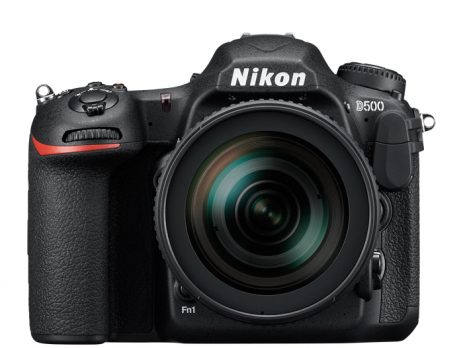
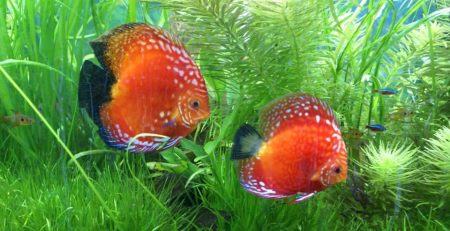

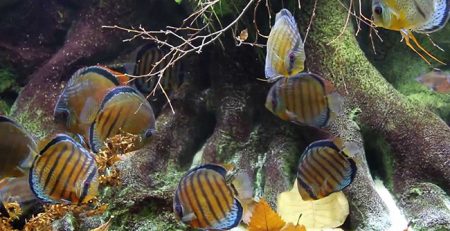
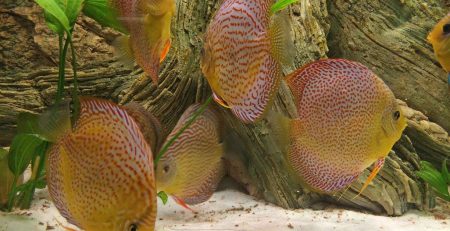
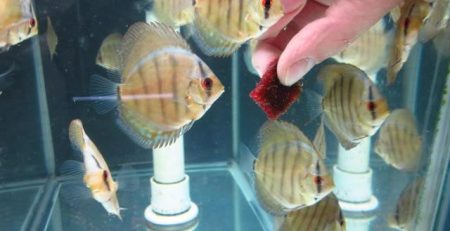
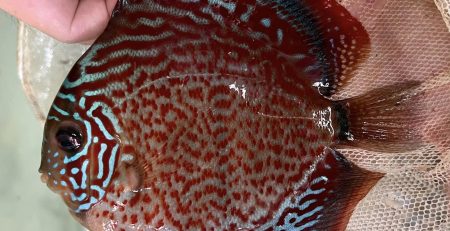


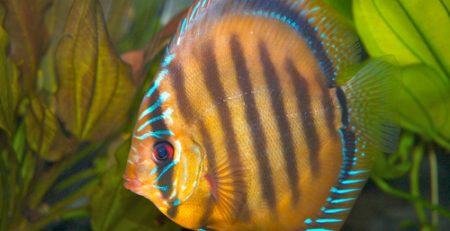

Leave a Reply
You must be logged in to post a comment.